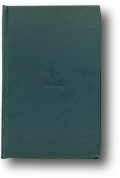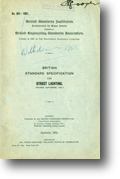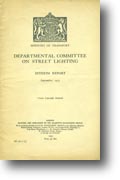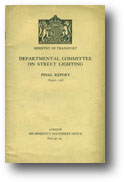
|
 |
 |
publications | british and european standards

|
british standard
specification no. 307, 1927, for street lighting
I don't have a copy of this specification. If you have a copy, then please contact me.
The Definitions and Appendices II and IV were published in The Theory And Design Of Illuminating Engineering Equipment and
have been reproduced here.
The Classes were never formally specified, although in a paper given in 1943 (Post-War Street Lighting By Gas by W. J. G. Davey and W. Hodkinson, published
in Public Lighting #31 October-December 1943) the following guides are given:
Classes C - D: Commercial centres of cities and large towns.
Classes D - E: Shopping areas.
Classes E - F: Arterial roads.
Classes F - G: Residential thoroughfares.
Classes G - H: Residential roads without through traffic.
|

|
british standard
specification no. 307, 1931, for street lighting
A revised specification was issued in 1931, based on the 1927 original, that omitted the glare calculations.
This specification was quickly overtaken by the MOT Reports of 1935 and 1937 but remained the British Standard. It was discreditted and
was out-of-print by 1943, but wasn't withdrawn until 1948.
"The appraisal of a street lighting installation is not a simple matter of measurement. It is not practical to
measure visibility, nor is it feasable to indicate the performance of a specified number, type and arrangement of
lighting units, owning to the diversity of the relevant street characteristics. The last specification, B.S. 307/1931,
attempted to provide a basis upon which installations could be designed and compared and tenders invited. It
attempted to specify and classify street lighting by measurements on the road surface - these were called "Test Points"
and some eight classes of installations were scheduled. The specification was well received but installations in
the higher categories were often not so good from the users' point of view as were some installations in the
lower class. The specification did not fulfil its main purpose and has been mainly abandoned." -
Lennox, Public Lighting #32, January-March 1944
It was one of the first official publications to use iso-candle diagrams. - Public Lighting #33, 1944.
|

|
ministry of transport
departmental committee on street lighting, interim report, 1935
In 1934, the Ministry Of Transport formed a Departmental Committee of Street Lighting to examine and report what
steps could be taken for securing more efficient and uniform street lighting. The Intermin Report was issued in 1935 as many
lighting authorities were postponing new installations.
This document, and the Final Report, would have a profound influence on street lighting in the UK for the next
seventy years.
|

|
ministry of transport
departmental committee on street lighting, final report, 1937
In 1934, the Ministry Of Transport formed a Departmental Committee of Street Lighting to examine and report what
steps could be taken for securing more efficient and uniform street lighting. In 1937, they issued this
The Final Report.
It was adopted by many lighting authorities as a new standard. The MOT would also only partially fund installations
which adhered to this report.
It would have a profound influence on street lighting in the UK for the next seventy years, and directly led to the
Street Lighting: Code Of Practice 1004:1952.
|
|
|
british standard
specification no. bs/arp 37, january 1940
Copy required
After relaxation of "black out" conditions in most areas, a very low-level form of lighting,
(which was known as "comfort lighting" or "starlight lighting") was permitted.
|
|
|
british standard
specification no. 1308, 1946, concrete columns
Copy required.
|
|
|



